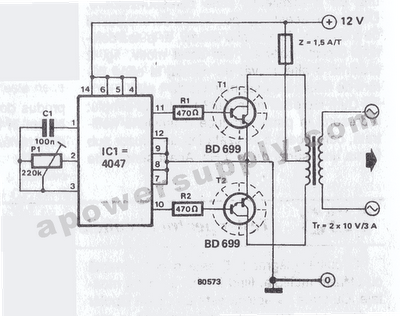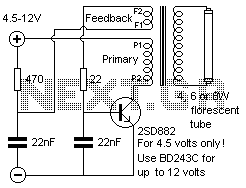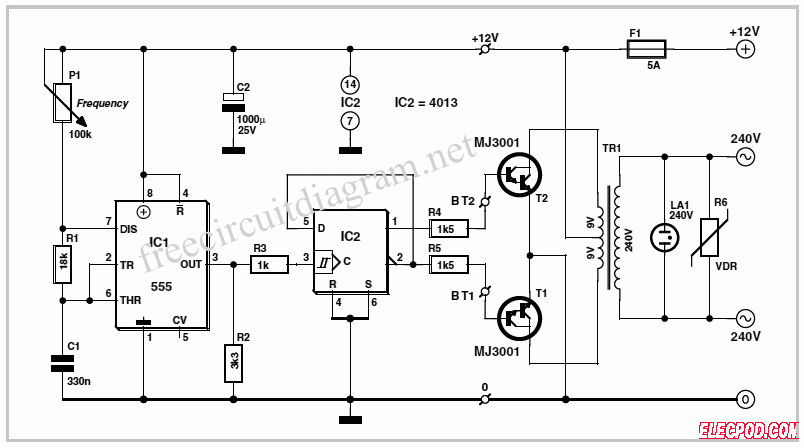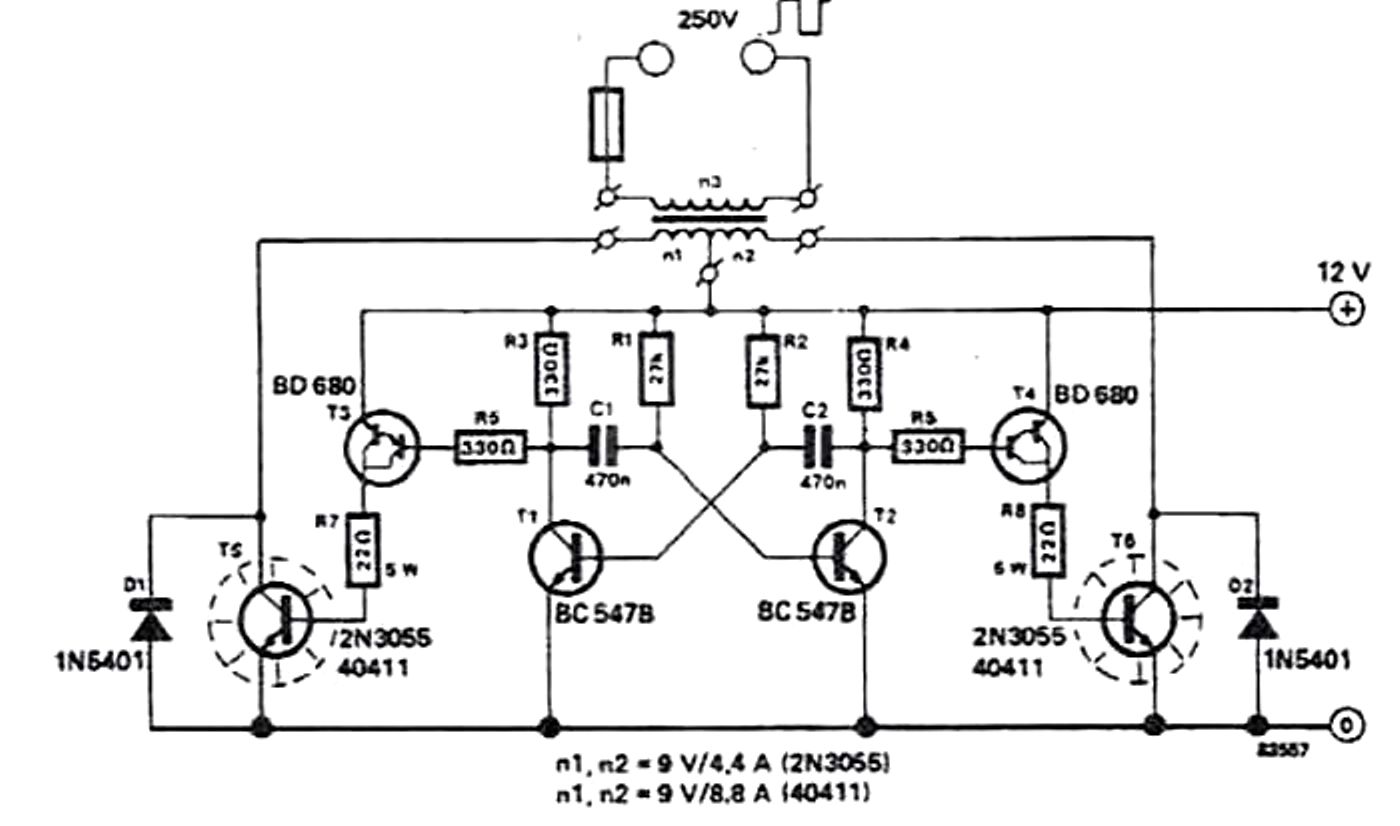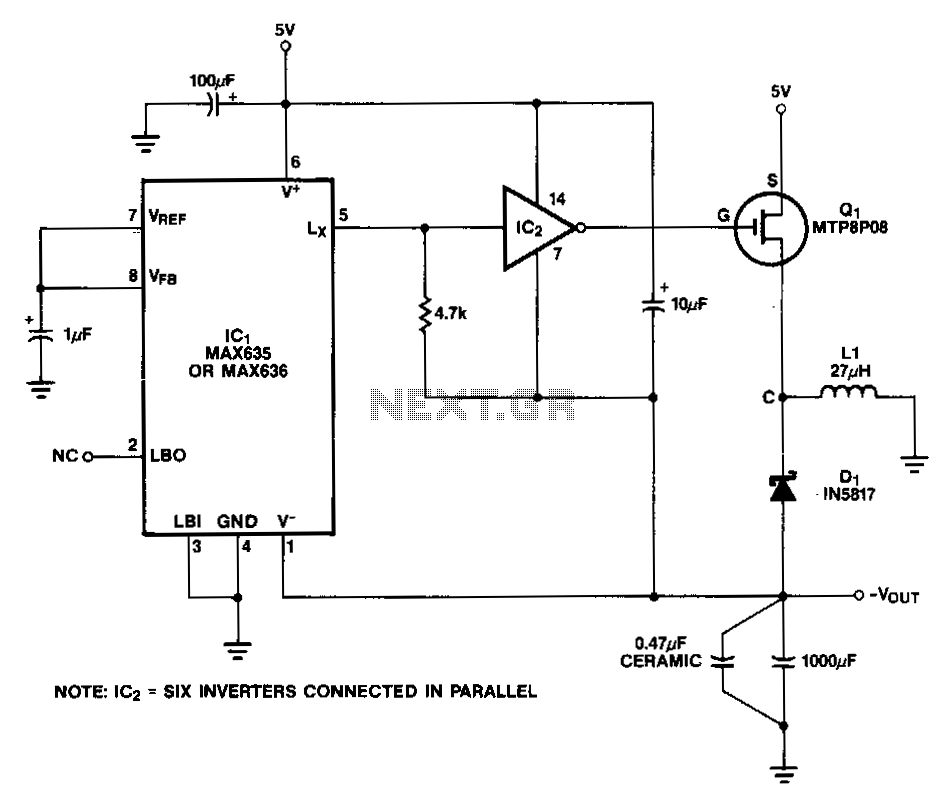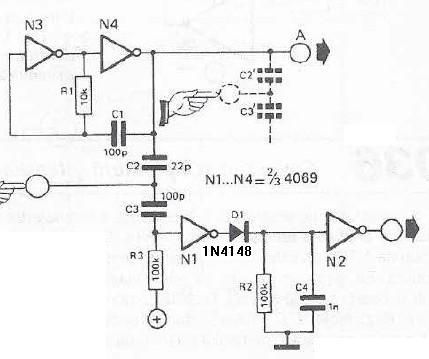
300Watt Inverter DC 24V to AC 220V

12V to 220V inverter circuit diagram, 24V inverter circuit, 24V to 220V inverter, 24VDC to 220VDC, 300W inverter, 300W inverter circuit diagram, inverter, inverter 24V to 220V, inverter circuit, inverter DC to AC, power electronics.
The inverter circuits mentioned are designed to convert direct current (DC) from a lower voltage (12V or 24V) to an alternating current (AC) at a higher voltage (220V). These circuits are essential in various applications, including powering household appliances from battery sources, renewable energy systems, and backup power supplies.
The 12V to 220V inverter circuit typically employs a transformer to step up the voltage. The circuit consists of key components such as power transistors or MOSFETs, which switch the DC input at a high frequency. This switching action generates a square wave or modified sine wave output, which is then fed into a transformer. The transformer increases the voltage to the desired level while isolating the output from the input.
The 24V inverter circuit operates on a similar principle but is designed for a higher input voltage. It can efficiently convert 24V DC to 220V AC, making it suitable for applications that require more power. The circuit design may include additional features such as feedback control to stabilize the output voltage and protect against overload conditions.
For both the 12V and 24V inverter circuits, a 300W rating indicates the maximum power output the inverter can handle. The circuit diagrams for these inverters typically illustrate the arrangement of the components, including the input and output connections, the switching devices, the transformer, and any additional circuitry for control and protection.
Inverter circuits can also be classified based on the type of output waveform they produce. Pure sine wave inverters provide a clean output that is suitable for sensitive electronic devices, while modified sine wave inverters are more straightforward and cost-effective but may not be compatible with all appliances.
In summary, the inverter circuits described serve a vital role in converting low-voltage DC power to high-voltage AC power, enabling the use of battery-operated systems in various applications. Proper design and component selection are crucial for ensuring efficiency, reliability, and safety in these power electronic systems.12v to 220v inverter circuit diagram, 24v inverter circuit, 24v to 220v inverter, 24vdc to 220vdc, 300w inverter, 300w inverter circuit diagram, Inverter, inverter 24v to 220v, inverter circuit, inverter dc to ac, power electronic 🔗 External reference
The inverter circuits mentioned are designed to convert direct current (DC) from a lower voltage (12V or 24V) to an alternating current (AC) at a higher voltage (220V). These circuits are essential in various applications, including powering household appliances from battery sources, renewable energy systems, and backup power supplies.
The 12V to 220V inverter circuit typically employs a transformer to step up the voltage. The circuit consists of key components such as power transistors or MOSFETs, which switch the DC input at a high frequency. This switching action generates a square wave or modified sine wave output, which is then fed into a transformer. The transformer increases the voltage to the desired level while isolating the output from the input.
The 24V inverter circuit operates on a similar principle but is designed for a higher input voltage. It can efficiently convert 24V DC to 220V AC, making it suitable for applications that require more power. The circuit design may include additional features such as feedback control to stabilize the output voltage and protect against overload conditions.
For both the 12V and 24V inverter circuits, a 300W rating indicates the maximum power output the inverter can handle. The circuit diagrams for these inverters typically illustrate the arrangement of the components, including the input and output connections, the switching devices, the transformer, and any additional circuitry for control and protection.
Inverter circuits can also be classified based on the type of output waveform they produce. Pure sine wave inverters provide a clean output that is suitable for sensitive electronic devices, while modified sine wave inverters are more straightforward and cost-effective but may not be compatible with all appliances.
In summary, the inverter circuits described serve a vital role in converting low-voltage DC power to high-voltage AC power, enabling the use of battery-operated systems in various applications. Proper design and component selection are crucial for ensuring efficiency, reliability, and safety in these power electronic systems.12v to 220v inverter circuit diagram, 24v inverter circuit, 24v to 220v inverter, 24vdc to 220vdc, 300w inverter, 300w inverter circuit diagram, Inverter, inverter 24v to 220v, inverter circuit, inverter dc to ac, power electronic 🔗 External reference
